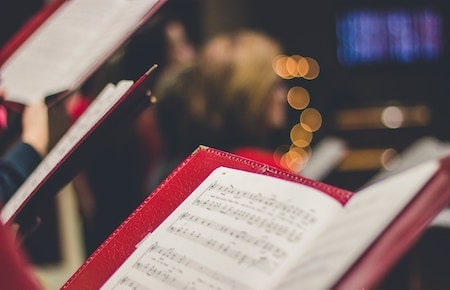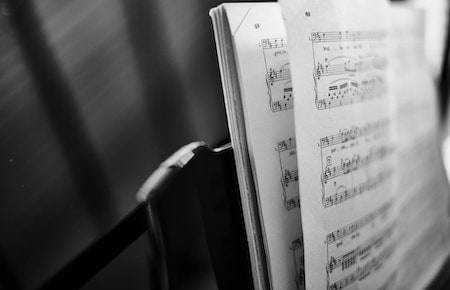
A strong, energetic SATB chorus, movement 39 of the Messiah is fairly brief. Forte all the way through, it makes a good concert opener. The orchestra follows Handel's original score.
Eb

An exciting aria for bass soloist, movement 40 of the Messiah. Furiously bowing strings mirror the nations and kings in the lyrics, which "furiously rage together".
C

M ovement 41 of Handel's Messiah is a lively, energetic SATB chorus. Imitative parts and frequent modulations present an interesting challenge for any choir. One measure has been added to the beginning to establish tempo and key.
C

A brief tenor recitative, accompanied by harpsichord and strings. Movement 42 of Handel's Messiah, this functions as a short introduction to the tenor aria "Thou Shalt Break Them".
E

A forceful, exciting aria for tenor, with lyrics describing God's wrath towards those who work against him. Orchestral direction follows the London Philharmonic recording. Movement 43 of Handel's Messiah, this aria occurs immediately before the famed Hallelujah Chorus.
Am

A dramatic SATB chorus, movement 46 of Handel's Messiah. Extremely slow and quiet sections describing death alternate with loud, upbeat sections describing resurrection. For this recording, organ quietly doubles the vocal parts in the a capella sections.
Am

Movement 47 of Handel's Messiah is a bass recitative that serves as a noble and grand introduction to the bass aria "The Trumpet Shall Sound".
D

A majestic, triumphant aria for bass, featuring solo trumpet and full orchestral accompaniment. Movement 48 of Handel's Messiah, it speaks of the end of the world: how the dead will be raised, and the mortal will become immortal. Quite lengthy, as practically the entire four-minute aria is repeated after a short interlude.
D

Movement 49 of Handel's Messiah is a short alto recitative, setting the tone (and the key) for the alto-tenor duet that follows it (O Death, Where is Thy Sting?)
Bb

A flowing duet for alto and tenor leads into a glorious SATB chorus thanking God. This track comprises movements 50 and 51 of the Messiah. Orchestral accompaniment is from Handel's original score.
Eb

The massive final movement of Handel's Messiah, scored for SATB chorus and full orchestra, includes unison rhythm choruses, four part fugal sections, a big ending, and a four-minute Amen section that could be considered a separate movement. Trumpets and kettledrums boost the energy of this truly grand finale.
D

This quiet alto aria about Christ's generosity towards his abusers is the B section of movement 23 of the Messiah. It was recorded separately so that it can be used alone, as a short and simple aria, or as a bridge to "He Was Despised" (Spiritrax 1208) as per Handel's original instructions.
Cm

An exciting aria for bass soloist, movement 40 of the Messiah. Furiously bowing strings mirror the nations and kings in the lyrics, which "furiously rage together".
C

The opening overture to Handel's Messiah. Played by full orchestra from Handel's original scores. Allegro, but with a slow introduction. Sets the stage perfectly for the full Messiah.
Em

Aria from the Messiah by Handel. This arrangement follows Handel's original score and the performance tempos as performed originally by the London Symphony Orchestra. Scored for orchestra and tenor voice. Perfect solo piece for the holidays.
E D